Is there life on Mars? This Iowa astronaut thinks so — and she wants to find it.
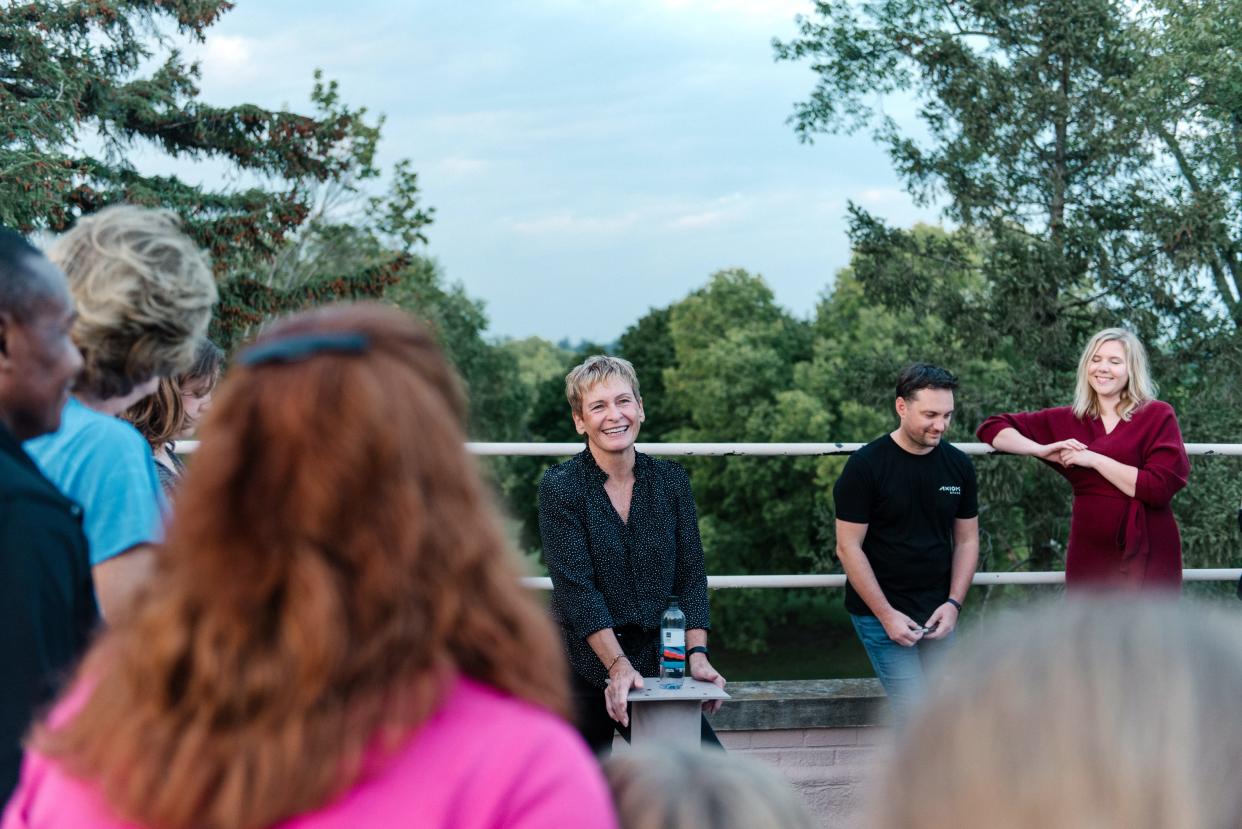
- Oops!Something went wrong.Please try again later.
Even though Peggy Whitson raked in enough awards to require multiple reinforced mantels, she never really thought of herself as a role model.
She was an astronaut, sure; the job that invented the rarely achievable X-factor of “right stuff.” But role models were people like Eleanor Roosevelt or Marie Curie, people who actually changed the world.
But then a cartoon, hand-snipped from the comics pages of a newspaper, was mailed to her attention.
In the drawing, a mother is holding up a princess Halloween costume while a little girl looks at a computer screen plastered with the picture of an animated Whitson floating in space.
“I don’t want to be a princess,” the girls says. “I want to be a space commander!”
Seeing is believing. Whitson knew that intellectually — especially considering NASA didn't start accepting women into the astronaut program until the year she graduated from high school — but the simplicity of the cartoon gave her a visceral understanding. The cartoon was a doodled gut punch to get out there and share her story of the improbable rise of a farmer’s daughter from Beaconsfield, one of the very smallest towns in Iowa, to the American with the most time in space — ever.
More: Meet 17 Iowa women who changed the world
While the stars always held young Whitson's fascination, her earliest love of science came from watching the life cycles of soybeans in her dad's fields. After graduating from Mount Ayr Community High School in 1978, she attended Iowa Wesleyan College, receiving a degree in biology and chemistry. She then earned a doctorate in biochemistry from Rice University, in Houston. A few years later, she married Clarence Sams, also a Ph.D. and veteran NASA researcher.
Since retiring from NASA, Whitson joined Axiom Space, a private company building the first commercial space station. After more than 20 years as an astronaut — a tenure that includes the superlatives of being the first female commander of the International Space Station and first female chief of the Astronaut Office — Whitson’s story is far from over.
And with the explosion of commercial space, which she says opens up greater access to the stars, Whitson might just be getting to the most exciting chapter.
“Space is a very expensive thing, but by commercializing it, giving more opportunities, having more companies involved, we are decreasing costs,” she says, “and therefore making it more and more accessible not only to people, but to all the investigators, the scientists, who want to get their research done.”
“I'd love to encourage young people to get excited now because there's going to be so many opportunities in the coming years that just weren't there before.”
Especially, she adds, if we are going to get to Mars — and beyond.
While in town for a recent Capital City Pride event at the Drake Municipal Observatory, I spoke with Whitson about how the next breakthrough cancer treatment might come from space, plans for a new Space Station and whether there actually is life on Mars.
Crowder: Watching the moon landing in 1969 was the beginning of your obsession with space. Can you describe what made that night on your parents’ farm in Beaconsfield so special?
Whitson: My mom was really strict on bedtime, but that night, after we got in pajamas, she said, ‘Come back down and we're gonna watch this.' Even as a 9-year-old, I recognized that this was something very, very big — and being a part of something bigger than me became very, very important.
Coming from a little town in Iowa, you grow up thinking your whole world is my farm. Then you go to school and your world gets a little bigger by a couple of towns. And you go off to college in another city and so your world starts expanding. I started work and school in another state. Then I started working in Russia, so ‘home’ became the whole United States. And then you leave the planet and the whole place is ‘home.’
Spaceship Earth, as I call it, is home.
Most grade-school students have seen pictures of Earth taken from space, but you got to see it with your own eyes. Is it possible to sum up what that was like?
The best analogy I have for that is it’s as if I spent my whole life living in a semi-dark room and somebody turned the lights on. That was my first look outside. The clarity, the visual sensations were just that dramatic a change. And then to do a spacewalk is like taking your first walk outside on a sunny, sunny day.
You retired from NASA in 2018 and joined Axiom Space. Tell me about that work.
Axiom Space won a contract with NASA to use the forward-most port of the International Space Station to begin building the first commercial station. We'll separate from the I.S.S. when it's decommissioned in 2030 and then we'll have an independent orbiting commercial station.
In the meantime, we are doing these precursor missions. In 2022, we had the first Axiom mission go to the Space Station. And this year, I took three private astronauts: One was an individual from Knoxville, Tennessee, and two were from Saudi Arabia, including the first Arab woman to fly in space.
Now, I am working with the Axiom team that is building the spacesuit that will be used when NASA sends the first people back to the moon.
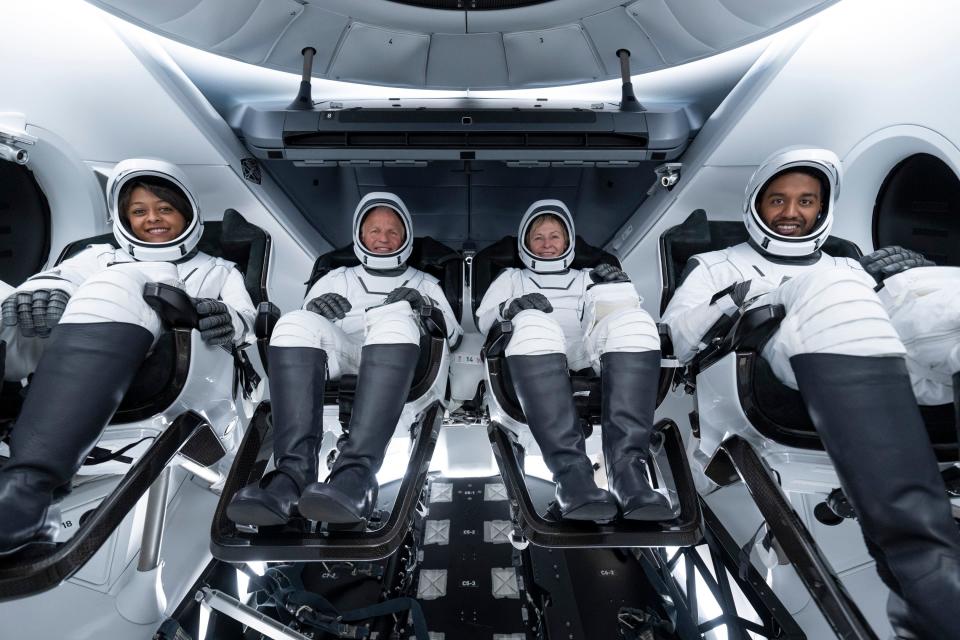
More companies than ever are vying for a piece of the stars. Given you background in biochemistry, what’s your vision for this new era in space travel?
What I envision, based on all the research I have done, is that we're going to start manufacturing things for people on Earth that we can only manufacture in space. We can create lenses and superconductor crystals better in space than we can on Earth, for example.
Pharmaceuticals are going to be a big one. One of my favorite experiments was the cancer research we were doing on my last mission. We were looking at different types of cancer cells, breast cancer cells and colorectal cancer cells, which are both leading causes of cancer.
When you're trying to do experiments on the ground with cancer cells, sometimes it's hard to develop therapies and drug treatments because the cells don't act the same way they do when they’re in your body. But cancer cells in space actually grow more like they do in your body. And we think by using microgravity as a model system, we could actually develop drugs and therapies that are going to be more effective here on the ground.
What’s holding us back from going to Mars and what's needed to make that trip?
We've got to get over the radiation that astronauts would encounter. The best way to get through that would be to get there faster because radiation impacts are a function of time. Nowadays, conventional engines would take us six to nine months to get to Mars. If we use nuclear engines, we could potentially get there in three, and so you would reduce your risk by half.
But the life support systems, the water reclamation systems are absolutely critical for going to Mars or the moon because we don't want to have to take water with us; it's too heavy.
Going back to the lunar surface, we are going to use the surface materials, the soil, to try and build structures. To be able to do that on the Martian surface is a good thing, so practicing it on the moon is great. Also pulling hydrogen out of the lunar surface is going to be a good practice as it could become a fuel depot for missions that are going further beyond the moon.
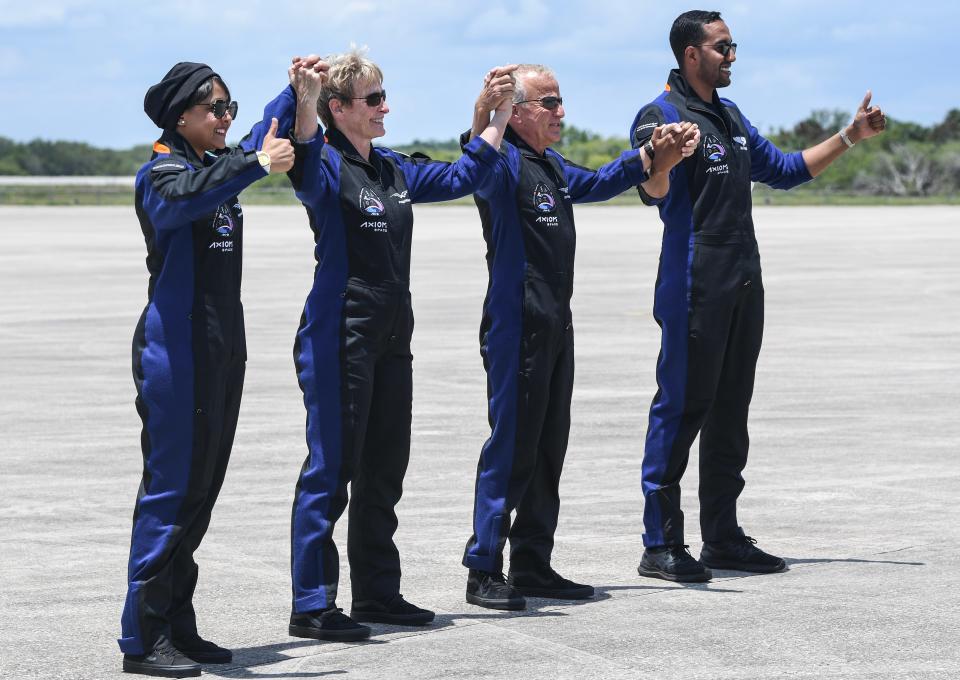
If you went to Mars, what would you look for?
I’d like to look for signs of life or previous life. There's a lot of indications that suggests it might have been there or might still be there. We know from a lot of places on Earth that we can find life in places that are completely unexpected, in sulfur mines, for example. Lots of different situations provide opportunities for life to be present.
Did you ever see alien activity while in space?
No, I never did. But there's always things that you see where you're thinking, ‘Oh, I wonder what that is.’
You were rejected for 10 years before being accepted into the astronaut program. What’s your advice for people facing hard denials?
Looking back on my life, I think one of the most valuable lessons for me has been to do things that I didn't know I could do. I like to say it's living a little bit outside your comfort zone. If you think, well, I might not be able to do that or I might not be successful in doing that, then you're never going to find out what you're truly capable of.
I always wanted to be an astronaut. I didn't ever think I necessarily would become a commander, didn't necessarily think of leading the astronaut office. These are things that came from challenging myself to live a little bit outside my comfort zone.
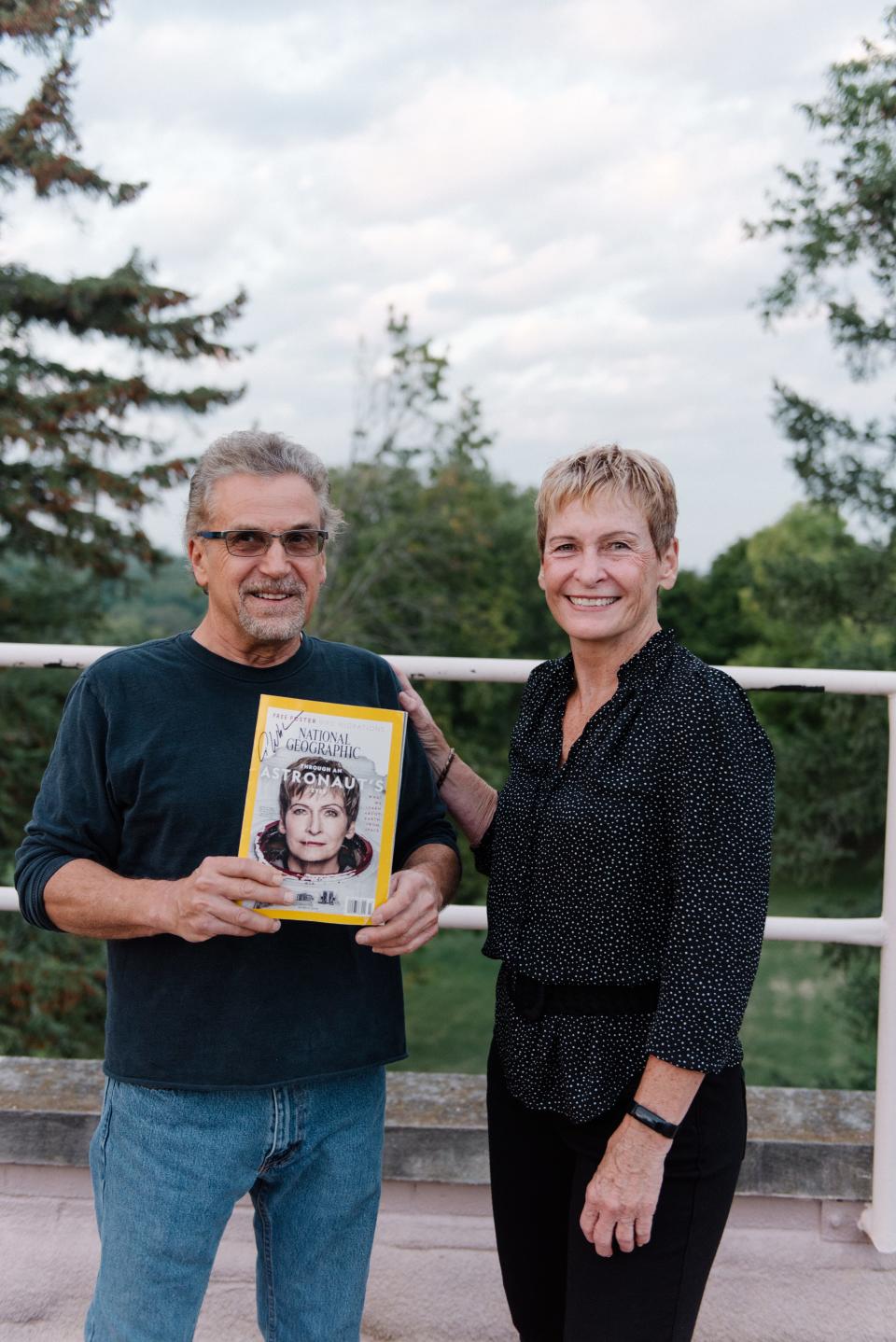
OK, speed round. What’s your favorite space movie? I really love “The Martian." They got the NASA culture down pretty well.
Must-haves for space travel: We are allowed to take a few personal items, and on every one of my spaceflights I took this necklace I wore when I got married.
Best space food: Chicken fajita.
Real food you couldn’t wait to eat: After my first trip, I wanted steak and Caesar salad. My third flight was pizza. I'd been up there for like eight months and one of the guys on board was talking to the ground team and he said “pizza delivery,” so for the last month and a half I wanted pizza.
Best astronaut prank: My fun thing, having had so much experience in space, is when the new guy shows up on board the space station, their brains are still working in gravity. You ask them to throw you something across the module and they're correcting for gravity. So it’s always gonna bounce off the ceiling.
Most difficult subject in astronaut training: Orbital mechanics.
You just got back in May, but when’s your next trip: I'm training right now as the backup commander for the Axiom-3 mission, which is planned for January.
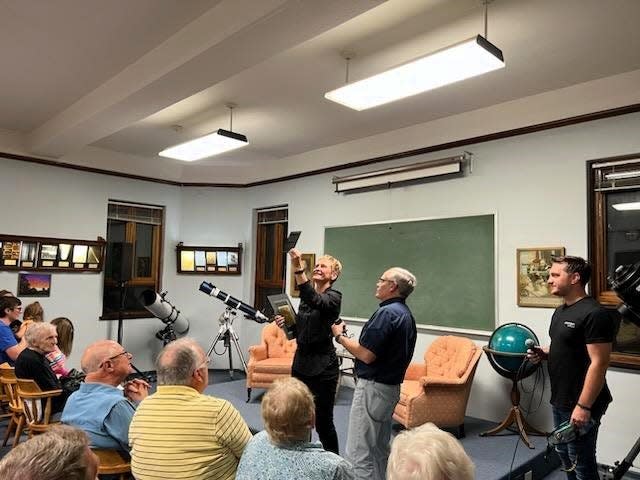
This conversation includes excerpts from a private interview as well as Whitson’s public comments. It was lightly edited and condensed for clarity and space.
Courtney Crowder, the Register's Iowa Columnist, traverses the state's 99 counties telling Iowans' stories. Her favorite space movie is "Alien." Reach her at ccrowder@dmreg.com or 515-284-8360. Follow her on Twitter @courtneycare.
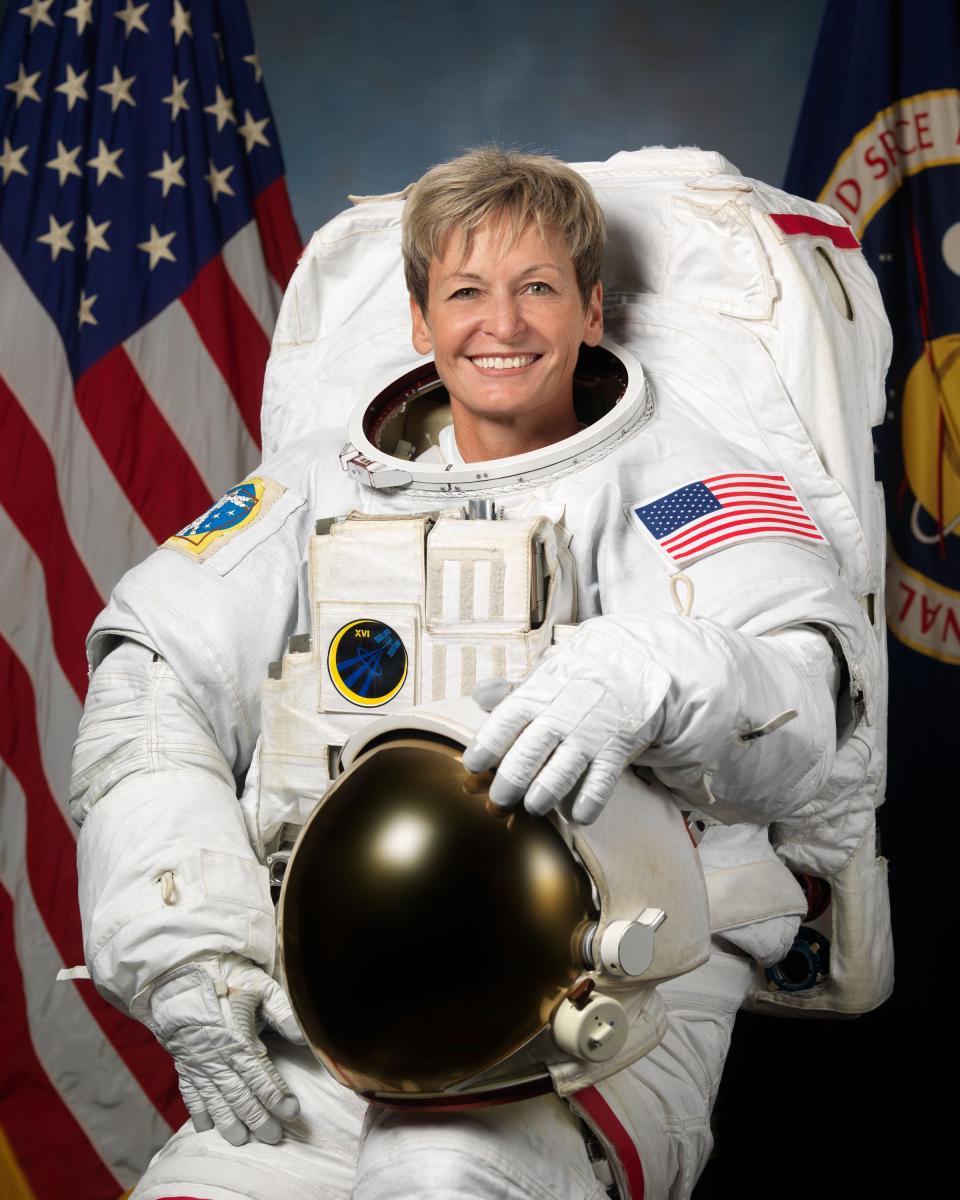
This article originally appeared on Des Moines Register: Iowa astronaut Peggy Whitson takes aim at Mars, seeking signs of life

